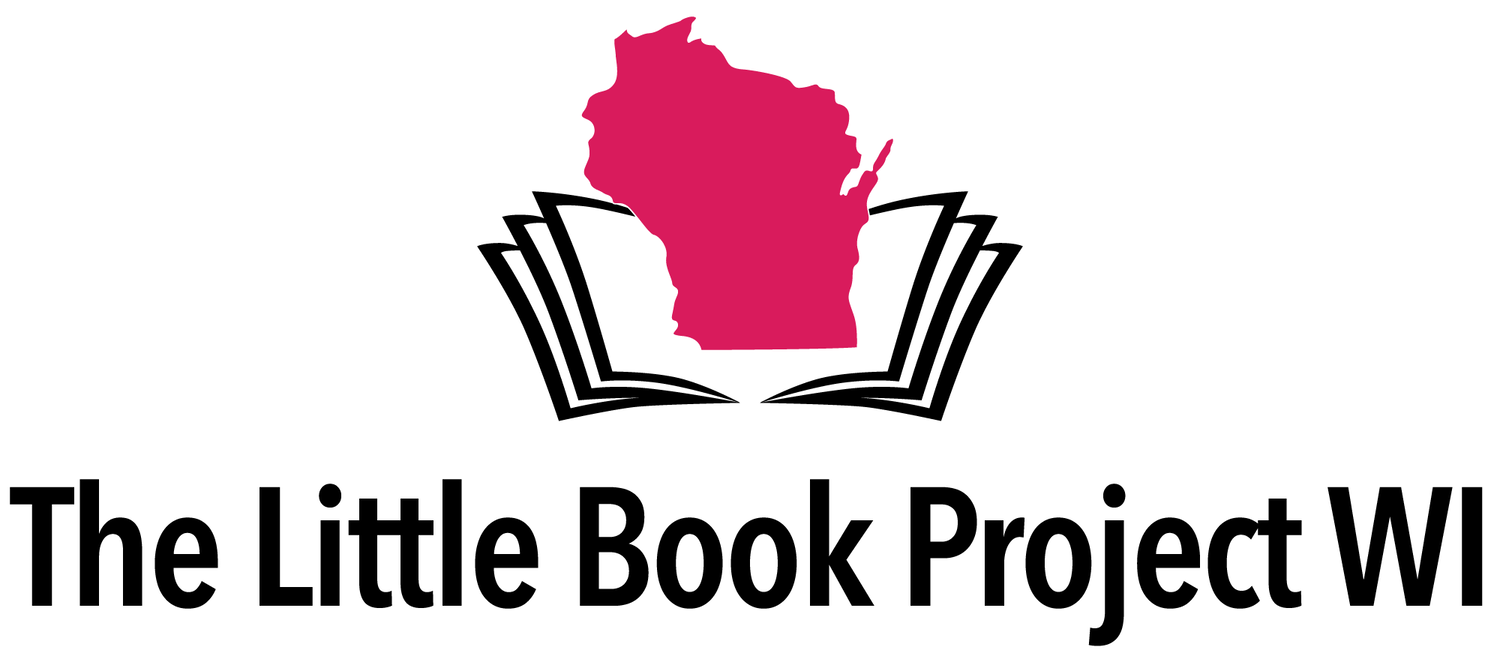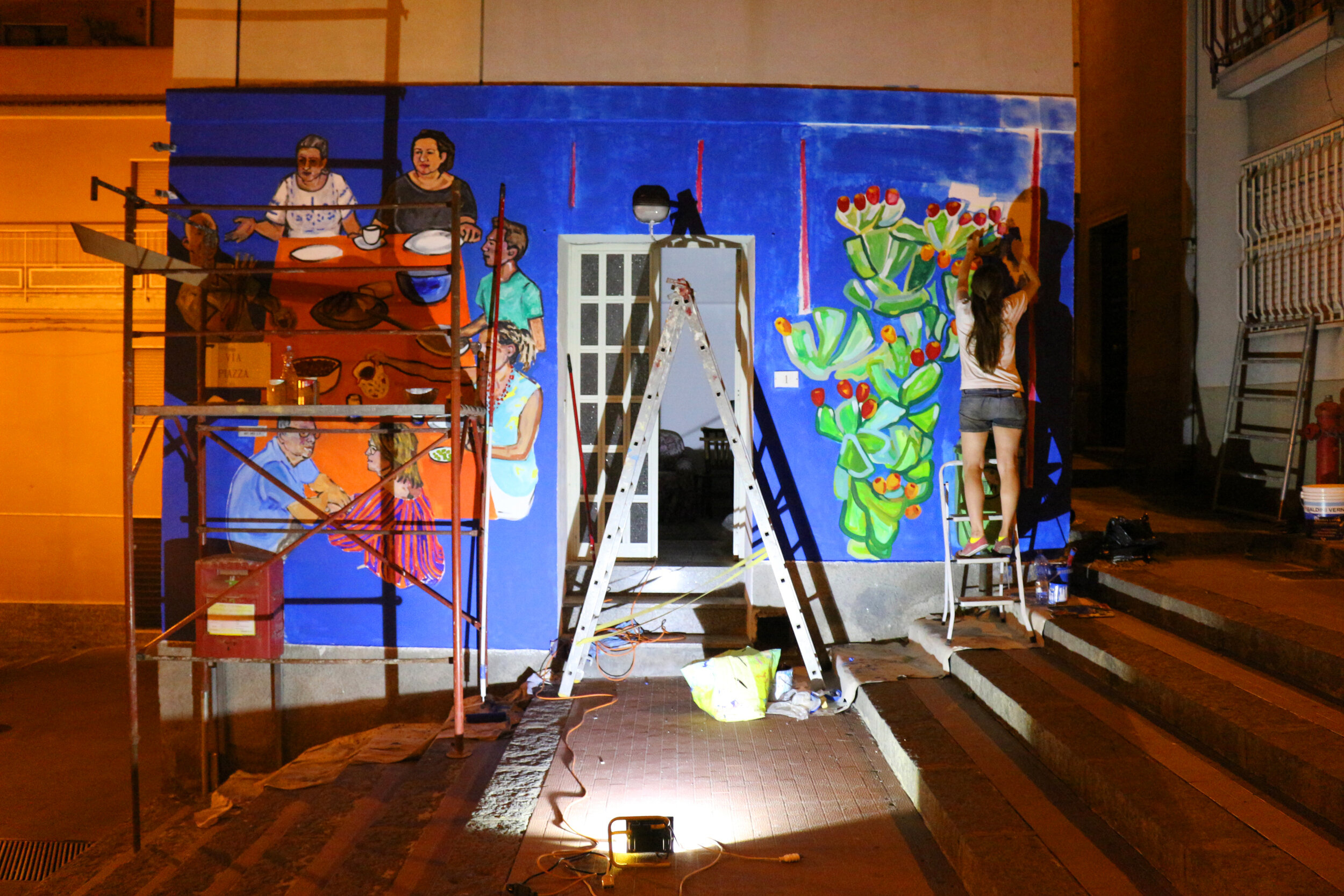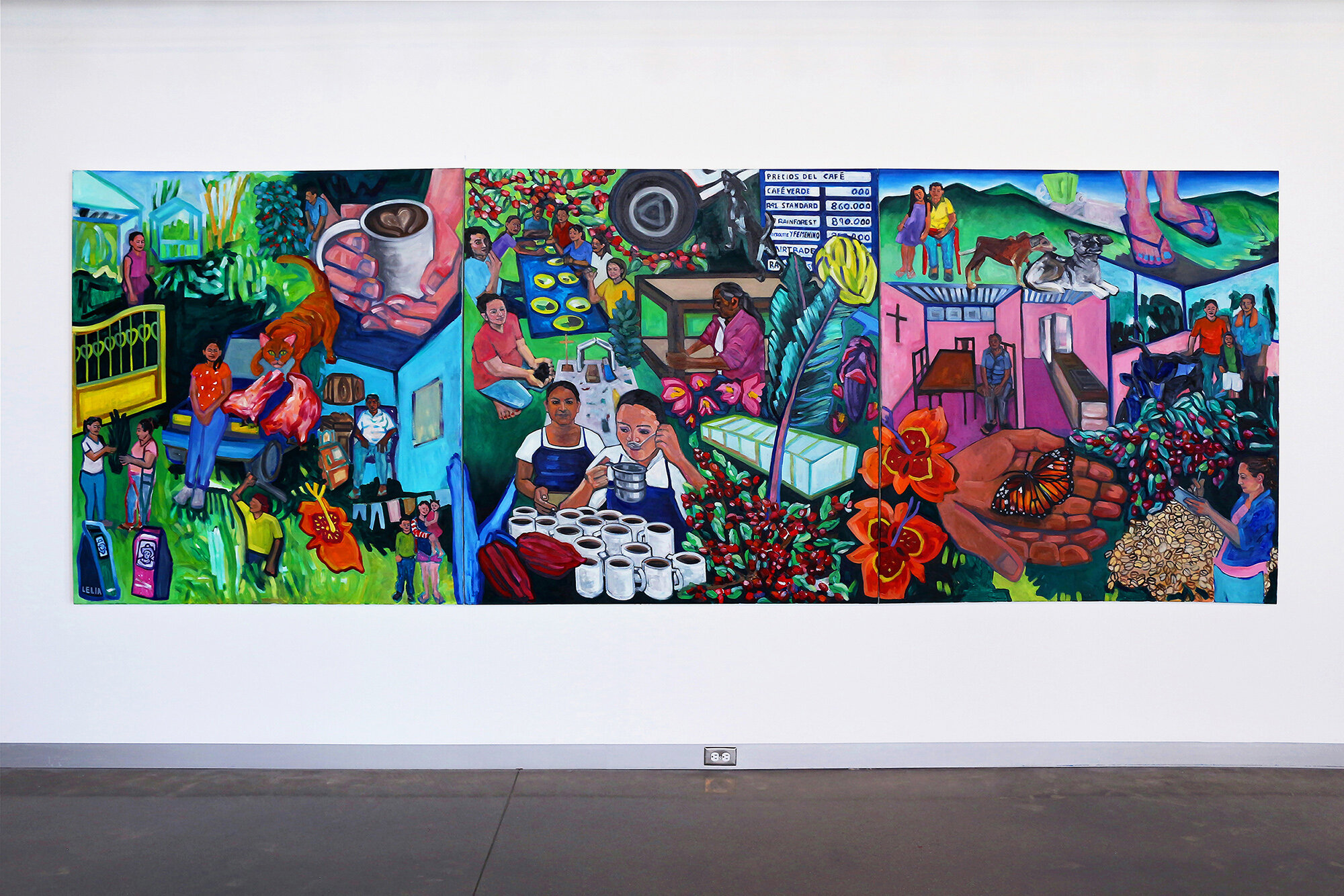Artist Profile: Lelia Byron
Lelia Byron is an interdisciplinary artist who makes paintings, murals, sculptures, installations and public art projects. Lelia has a Bachelor’s of Fine Art from Carnegie Mellon University and a Master’s in Fine Art from Chelsea College of Arts (University of the Arts London). Originally from New York City, Lelia has since lived in a number of different places, and is currently based in Madison, WI.
1) What fuels your creative expression? And how do you practice self-care as an artist?
I’ve always been really passionate about the making process and the potential for an artist to create something interesting from simple materials in a way that is almost magical. I think no matter whether I am making a painting or a sculpture, the making process is always a very intense and time-consuming as I am putting layer upon layer—building up piece by piece—until something begins to emerge that is saturated and detailed.
I believe in the value of art and the importance art can have for people. Part of what fuels me to create is the challenge of finding new ways to communicate with others. When I make art, I am part of a creative experience, but I also make work to share with others all the questioning, experimenting, exploring and inventing that art generates. I’m always thinking about how to bring more people into the arts and how to use art as a way to connect. A third big motivation for me is narrative and the different ways art can tell a story in a way that is not necessarily linear with a beginning, middle and end. In a painting, for example, all of the narrative components are happening at once, whereas in a sculpture or an installation the narrative is about how someone moves around or interacts with the work in a physical space.
When it comes to self-care, often I’m working on a lot of projects at once. So keeping a sketchbook relieves some pressure because I can put down all of my ideas and experiments, then come back to them at a later time. More generally, I think being an artist is very fulfilling, but it is also a difficult career. It requires a lot of resilience and persistence in the face of setbacks and constant challenges. I think it’s important for artists to develop support networks with other artists and to have the support of someone who believes in what you do and is there for you whether that person is friend, family, partner, colleague or someone else. Artists supporting each other builds a strong network which enables sustainable and thriving creative practices.
2) Do any of the following words accurately reflect past or present themes explored in your work: 'repurpose,' 'reach' or 'revolt'?
When I’m making an artwork, the theme of repurpose or cycles is often very relevant. I’m interested in repurposing materials and giving something a different meaning by putting it in a new context. For example, in 2019 (in rural Portugal), I used handmade machines to DIY recycle thousands of discarded plastic bottle caps to make two outdoor sculptures that now sit at one of the town entrances. Another sculpture which relates to this idea of repurpose is Plastic Waters (made in 2021), illustrating plastic’s contribution to climate change represented by rising water levels. This sculpture was made out of plastic waste such as plastic bags and synthetic fabrics, including discarded wedding tablecloths. Plastic Waters was a temporary installation. Afterwards I used the hidden wood support frame from the installation to make Quilt, now on view in Green Bay. In a quilt, many different parts—each with its own story—come together to form a complex system; much like how we are all intricately connected to each other and to the natural environment. Quilt is symbolic of creativity through resourcefulness, similar to a textile quilt made from scrap fabric, as a lot of the wood for the sculpture was repurposed. Repurposing for me is also connected to the idea of cycles both in the making process plus in content like a repeating figure in a painting.
Reach is another interesting word to me because it relates to this idea of connection. I believe it is possible to connect people through the creative process either literally by bringing people together in a space—or by provoking an emotional response or idea. Sometimes when I am working on a project, I often start with an investigative process where I will interview others as a way to bring people into the creative process and as a way to approach a topic through a creative or unexpected method. From 2016 to 2017, I made a series of paintings based on interviews with people in Massachusetts and Rhode Island fighting for labor rights. In 2017, I also made a public mural in a small town in Sicily documenting local stories. Over the past four years, I made a series of paintings based on interviews I conducted with women coffee farmers in Colombia who are participating in an initiative to shift labor for women from working on household tasks to being entrepreneurial leaders.
Public art is also very interesting to me as it is a way to make creative disruptions that reach and connect people. When I say public art, I mean art that is made in or shown in an everyday space instead of necessarily a dedicated art space. In 2020, I worked with elementary school students in Finland to make a public art installation at the Rauma Museum of Art. The project explored how as individuals we make up both local groups and a broader global community, both in space and time. Using printmaking and installation, students were encouraged to think about art as a language for telling their stories and ideas while also reflecting on ties with history and the future, Rauma and the world.
Revolt has a lot of different connotations, but I am interested in the word in the sense that ‘revolt’ relates to the word ‘change’ and connotes something or someone bringing about change. I believe in the artist's potential as a creative problem solver and innovator. Art really can take on so many different functions that can inspire or create change.
3) Any work or projects you are looking forward to pursuing (or finishing) this year?
Currently, I am finishing up a series of paintings that I’m really excited about, which will be exhibited at the Larson Gallery at the University of Minnesota beginning this November 2021. The paintings are based on remembered fragments and written records of my own dreams. The paintings offer a more permanent and complete window into ephemeral dreams exploring loss, confinement, disruption, grief, isolation, freedom, imagination, peace, hope, wonder and the fantastical.
4) Fave installation, exhibition, writing &/or performance by another artist that you've recently encountered?
I think artists have made a lot of strong work in 2020 and 2021. I have also seen a lot of artists experimenting with new ways to share their work. This spring, my artist friend Ka Ian Hoi had an exhibition in Macau, where as part of the exhibition, she wrote on the wall “How are you? Please erase your answer.”—followed by choices written in pencil. The audience erased their answers during the exhibition, and the end of the exhibition resulted in a blank wall. In the fall, I saw a virtual play written by Ricardo Silva Romero in which each actor stayed within their own individual set and interacted with each other via phone. At the end of the play, the virtual audience could choose to watch from three different endings. I’ve also been really interested in how many artists have used outdoor spaces this past year and a half in impactful ways through murals, by turning windows into rotating gallery spaces, or through outdoor sculpture parks such as the Socrates Sculpture Park (Queens, New York City) and the Franconia Sculpture Park (Shafer, Minnesota). In Madison, it was great to see this winter different artists creating sculptural installations throughout the city in addition to developing live-streamed performances for the Winter is Alive! event.




